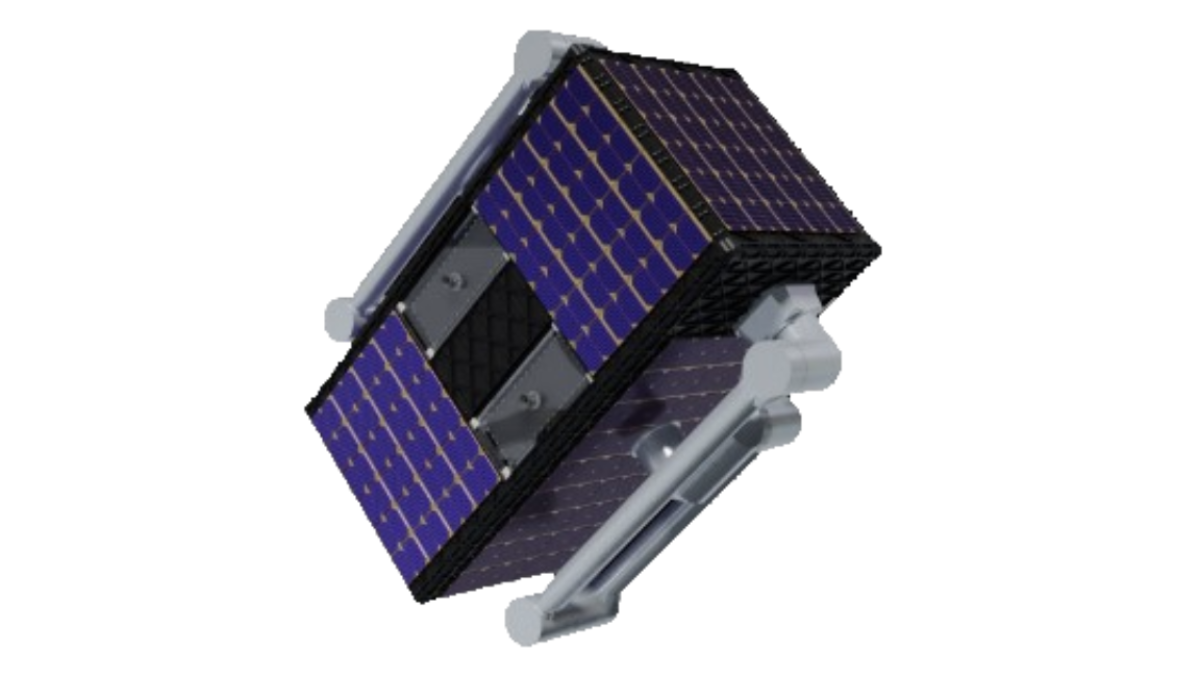Interplanetary Laboratory partners with Howe Industries for Space Force funding proposal

Simulation of ROAMER microsatellite.
Arizona State University's Interplanetary Laboratory and Howe Industries have thrown their hats into the ring for a funding opportunity sponsored by a U.S. Space Force Orbital Prime Small Business Technology Transfer (STTR) contract.
ROAMER is a 3U x 3U x 7U microsatellite that has robotic arms and a multitude of mission statements. One of its missions is transferring objects that have drifted out of orbit back to their intended orbit. This ability also allows it to assist astronauts. If they drop a wrench or other piece of equipment while working outside the space station, ROAMER can retrieve it. It can also remove orbital debris and deploy CubeSats.
The first proposal for ROAMER was submitted earlier in 2022. The project was selected to move on to the next round of consideration. For the next three months, the Interplanetary Laboratory staff and volunteers assembled a large team and prepared a feasibility report to determine how much it would cost and how much time it would take to build.
In October, that work was submitted for consideration for the next round of funding. If the project is selected to move forward, the partners will then conduct a systems requirement review. They will also enter the beginning phase of writing requirements, preliminary design review and critical design review.
This latest project undertaken by the Interplanetary Laboratory is a result of the connections made between industry professionals and laboratory staff. Howe Industries, which employs ASU graduates, had previously toured the lab and explored its enabling capabilities.
Interplanetary Laboratory student workers utilized the facility’s 3D printers, computer-automated design software and SolidWorks. They also had the benefit of the experience they had from other laboratory projects like Charlotte and ExoCam, in addition to the expertise that the lab’s faculty leaders and professional engineers provide.
The prospect of seeing a project from its initial proposal to implementation is exciting for the laboratory students.
“Most of the things that I’ve done for the lab are things that I’ll be doing in the industry. We’re actually doing things that people who are just starting out wouldn’t be doing for two years into their career,” said Dave Ordaz Perez, head electrical engineer for the EPS Subsystem on the project.
The ROAMER proposal comes at a time when the industry is best poised to benefit from all it offers. Space debris removal is a priority right now, drawing substantial investment, and interest in satellites with robotic arms has also grown. ROAMER combines both those trends.
The intricacies of the project pushed the Interplanetary Laboratory student workers and volunteers in a new way.
“We got more experience with proposal writing and doing calculations on how things will integrate together by working on this project,” said Ben Weber, head guidance and navigation and control engineer on the project.
The Interplanetary Laboratory is a shared resource available to faculty and students at ASU as well as external academic groups and industry partners. To inquire about using the lab’s facilities, please reach out to Joe DuBois at jdubois2@asu.edu or Danny Jacobs at dcjacobs2@asu.edu.
More Science and technology

ASU at the heart of the state's revitalized microelectronics industry
A stronger local economy, more reliable technology, and a future where our computers and devices do the impossible: that’s the…

Breakthrough copper alloy achieves unprecedented high-temperature performance
A team of researchers from Arizona State University, the U.S. Army Research Laboratory, Lehigh University and Louisiana State…

4 ASU researchers named senior members of the National Academy of Inventors
The National Academy of Inventors recently named four Arizona State University researchers as senior members to the prestigious…

